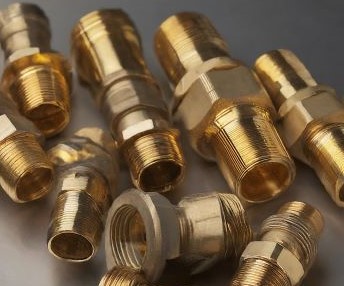High-pressure quick connect fittings are a game-changer for anyone working with hydraulic systems, air lines, or other applications involving high-pressure fluids. They offer unparalleled convenience and efficiency, allowing for quick connections and disconnections without compromising safety.
This guide will equip you with the knowledge to choose the right high-pressure quick connect fittings and ensure their safe and effective use.
Understanding High-Pressure Quick Connect Fittings
Before diving in, let’s get familiar with some key terms:
➡️ Flow Rate: The volume of fluid that can pass through a fitting in a given unit of time (e.g., gallons per minute).
➡️ Pressure Rating: The maximum pressure a fitting can safely withstand (often denoted in PSI or BAR).
➡️ Coupling Mechanism: The method used to connect and disconnect the fitting (e.g., ball-lock, sleeve-lock).
There are various types of high-pressure quick connect fittings, each with its own functionalities. Common types include:
➡️ Ball-Lock: Features a ball bearing mechanism that locks securely when pushed into the coupler. Easy to use but requires a firm push to connect.
➡️ Sleeve-Lock: Utilizes a locking sleeve that slides over the coupler to secure the connection. Offers a more positive lock but might require two hands to operate.
➡️ Flat-Face: Employs flat surfaces that seal together when connected. Often used in applications requiring high flow rates due to minimal restriction.
Choosing the Right High-Pressure Quick Connect Fitting
Selecting the right fitting is crucial for optimal performance and safety. Here’s what to consider:
➡️ Pressure Rating: This is paramount. Always choose a fitting with a pressure rating exceeding the maximum pressure in your system. Never exceed a fitting’s pressure rating!
➡️ Flow Rate: Ensure the fitting’s flow rate accommodates the flow requirements of your application. A restricted flow rate can hinder performance.
➡️ Material: Brass is a common choice for its affordability and durability. Stainless steel offers superior corrosion resistance for harsh environments.
➡️ Coupling Mechanism: Consider the trade-off between ease of use (ball-lock) and secure connection (sleeve-lock) based on your needs and application.
Safe Practices for Using High-Pressure Quick Connect Fittings
Safety is paramount when working with high-pressure systems. Here are essential precautions to follow:
➡️ Always use fittings with a pressure rating exceeding your system’s pressure.
➡️ Check fittings for corrosion, wear, and damage on a regular basis. Replace worn or damaged fittings immediately.
➡️ Ensure proper alignment before connecting and disconnecting fittings. Misalignment can cause leaks or damage.
➡️ Wear appropriate personal protective equipment (PPE) such as safety glasses and gloves when working with high-pressure systems.
➡️ Always release pressure in the system before disconnecting fittings to prevent accidental fluid sprays.
Maintenance and Troubleshooting Tips
Proper maintenance extends the lifespan of your high-pressure quick connect fittings. Here’s how:
➡️ Regularly clean the fittings with a non-abrasive cleaner to remove dirt and debris that can hinder performance.
➡️ Follow the manufacturer’s recommendations for lubrication (if applicable) to ensure smooth operation.
Common problems include:
➡️ Leaks: Leaks can indicate worn seals, improper installation, or damage. Check for the source and replace worn components or the entire fitting if necessary.
➡️ Loose Connections: Loose connections can occur due to wear or improper tightening. Tighten the fitting securely, but avoid over-tightening.
Remember, for any significant issues, consult the manufacturer’s instructions or seek help from a qualified professional.
Conclusion
Using the right high-pressure quick connect fittings and following safe practices are essential for efficient and reliable operation in high-pressure applications. These fittings offer significant advantages in terms of convenience and time-saving compared to traditional threaded connections.
By following this guide, you can ensure the safe and effective use of high-pressure quick connect fittings in your projects.
Post time: Jul-10-2024


